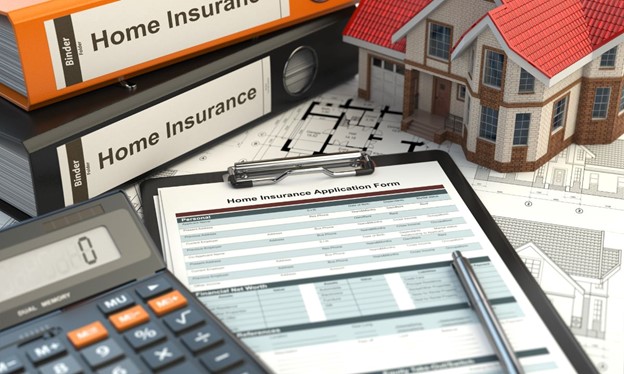 Home renovations can be an effective way to protect your home and family from natural hazards. Start by identifying the potential hazards in your area. This can include natural disasters such as earthquakes, hurricanes, floods, wildfires, and tornadoes, as well as man-made hazards such as gas leaks and fires. Once you’ve identified the potential hazards in your area, create a plan for how you will respond to them and prepare your home to take on these natural disasters and keep your home and family safe.
Home renovations can be an effective way to protect your home and family from natural hazards. Start by identifying the potential hazards in your area. This can include natural disasters such as earthquakes, hurricanes, floods, wildfires, and tornadoes, as well as man-made hazards such as gas leaks and fires. Once you’ve identified the potential hazards in your area, create a plan for how you will respond to them and prepare your home to take on these natural disasters and keep your home and family safe.
Here are some ways home renovations can help protect you:
Reinforce Your Home’s Structure: One of the most important aspects of protecting your home from natural disasters is ensuring that its structure is strong and stable. You can reinforce your home’s structure by adding earthquake-resistant materials, hurricane straps, and reinforced roofing systems.
Install Storm Windows and Doors: Installing storm windows and doors can help protect your home from strong winds and flying debris during hurricanes, tornadoes, and other severe weather events.
Elevate Your Home: If you live in a flood-prone area, elevating your home can help protect it from flood damage. This can involve raising your home on stilts or piers or building a higher foundation.
Install a Backup Power Source: In areas where power outages are common during severe weather events, installing a backup power source such as a generator can help ensure that your home stays powered and comfortable.
Install a Sump Pump: If your home is at risk of flooding, installing a sump pump can help remove excess water and prevent water damage.
Install Fire-Resistant Materials: If you live in an area prone to wildfires, installing fire-resistant materials such as non-combustible roofing materials, siding, and decks can help protect your home from fire damage.
Overall, home renovations can be a worthwhile investment in protecting your home and family from natural hazards. It’s important to work with a licensed contractor and follow local building codes and regulations to ensure that your renovations are safe and effective.
 The week following the FOMC rate decision meetings are typically very light, with the two most influential releases being the University of Michigan Consumer Sentiment and the weekly Job Claims reports. The more positive news is mortgage lending rates have been on the decline in the last two weeks.
The week following the FOMC rate decision meetings are typically very light, with the two most influential releases being the University of Michigan Consumer Sentiment and the weekly Job Claims reports. The more positive news is mortgage lending rates have been on the decline in the last two weeks. When a borrower applies for a mortgage loan, the lender typically requires proof of insurance coverage before they approve the loan. An insurance binder is a document issued by the insurance company that provides temporary proof of insurance coverage until the official insurance policy is issued.
When a borrower applies for a mortgage loan, the lender typically requires proof of insurance coverage before they approve the loan. An insurance binder is a document issued by the insurance company that provides temporary proof of insurance coverage until the official insurance policy is issued. Purchasing a home is one of the most significant financial investments one can make in one’s lifetime. However, beneath the glossy exterior of a prospective dream home lies a world of hidden issues that can have a profound impact on your investment.
Purchasing a home is one of the most significant financial investments one can make in one’s lifetime. However, beneath the glossy exterior of a prospective dream home lies a world of hidden issues that can have a profound impact on your investment. “No-deposit” mortgage deals for first-time buyers refer to mortgage options that allow buyers to purchase a home without having to put down a deposit or a down payment. Here are the pros and cons of such deals:
“No-deposit” mortgage deals for first-time buyers refer to mortgage options that allow buyers to purchase a home without having to put down a deposit or a down payment. Here are the pros and cons of such deals: As far as purchasing a home goes, “bigger is better” has often been the mantra. However, the trend of downsizing and tiny homes has gained significant traction in recent years, prompting many to rethink their approach to living spaces. This shift towards smaller, more efficient living has far-reaching implications for our lifestyles, our environmental footprint, and the way we view material possessions.
As far as purchasing a home goes, “bigger is better” has often been the mantra. However, the trend of downsizing and tiny homes has gained significant traction in recent years, prompting many to rethink their approach to living spaces. This shift towards smaller, more efficient living has far-reaching implications for our lifestyles, our environmental footprint, and the way we view material possessions. The most important data of the quarter was released, signaling the direction for many markets and where economic policy may be headed. Jerome Powell as well as other members of the Federal Reserve spoke about the state of economic policy, informing many parties about their decisions to remain hawkish or dovish in their approach. Further rate hikes could tell a story that inflation is not yet under control and the Federal Reserve feels the need to continue these rate hikes, which will have a significant impact on the lending markets as a whole.
The most important data of the quarter was released, signaling the direction for many markets and where economic policy may be headed. Jerome Powell as well as other members of the Federal Reserve spoke about the state of economic policy, informing many parties about their decisions to remain hawkish or dovish in their approach. Further rate hikes could tell a story that inflation is not yet under control and the Federal Reserve feels the need to continue these rate hikes, which will have a significant impact on the lending markets as a whole. It’s important to be financially prepared for emergencies so that you can handle unexpected expenses or situations without having to worry about your financial stability. Here are some ways to financially prepare for emergencies:
It’s important to be financially prepared for emergencies so that you can handle unexpected expenses or situations without having to worry about your financial stability. Here are some ways to financially prepare for emergencies: Getting a mortgage can potentially help your credit score, as long as you make your payments on time and in full each month. Payment history is one of the most important factors that influence your credit score, so consistently making your mortgage payments on time can have a positive impact on your credit score over time.
Getting a mortgage can potentially help your credit score, as long as you make your payments on time and in full each month. Payment history is one of the most important factors that influence your credit score, so consistently making your mortgage payments on time can have a positive impact on your credit score over time. The holiday season is a time of joy and celebration, but it can also be a challenging time for your finances, especially if you’re juggling the responsibilities of a mortgage. However, with some thoughtful planning and budgeting, you can ensure that you enjoy the festivities without putting your financial stability at risk. I will provide you with essential tips and strategies to help you manage your mortgage budget during the holiday season.
The holiday season is a time of joy and celebration, but it can also be a challenging time for your finances, especially if you’re juggling the responsibilities of a mortgage. However, with some thoughtful planning and budgeting, you can ensure that you enjoy the festivities without putting your financial stability at risk. I will provide you with essential tips and strategies to help you manage your mortgage budget during the holiday season.